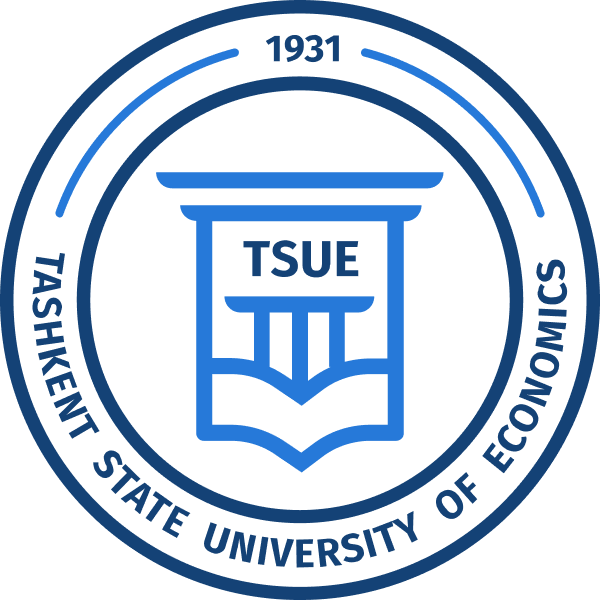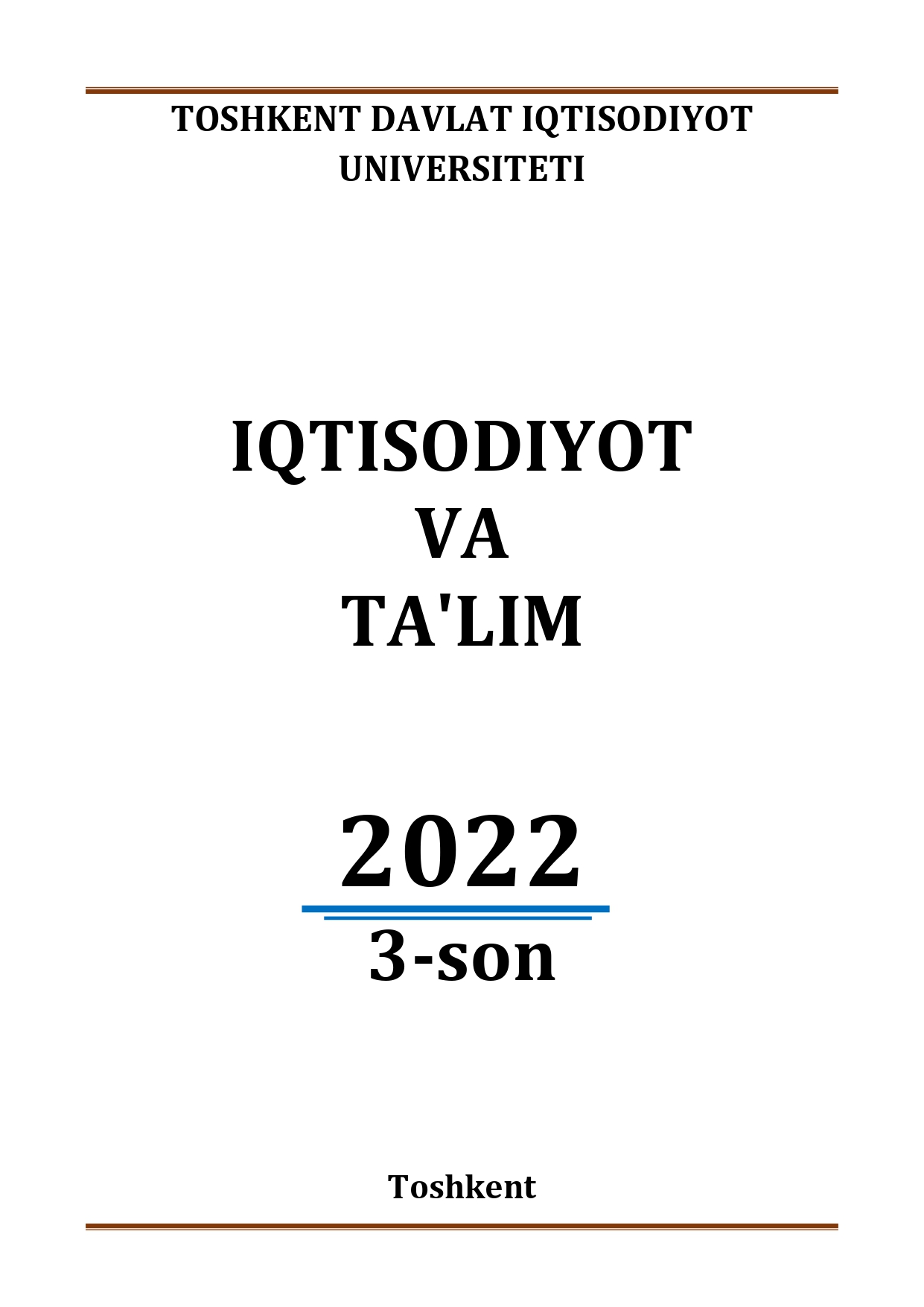Abstrak
Ayollar uchun oliy ta’lim XIX asrning ikkinchi yarmidan keyingina paydo bo‘lgan nisbatan yangi hodisa hisoblanadi. Shunga qaramay, 1990-yilning oʻrtalaridan boshlab rivojlangan mamlakatlarda oliy ta’lim olishda erkaklar soni kamaydi (Vinsent-Lankrin S., 2008) [3], shuning uchun ushbu mamlakatlarda ayollar va erkaklar oʻrtasidagi tengsizlik nisbatan tezroq barham topdi. Biroq rivojlanayotgan mamlakatlar bu muammoni hal qilish uchun hali ko‘p vazifalarni amalga oshirishi kerak. Ayrim jamiyatlarda qizlar faqat ikkinchi darajali oʻringa ega bo‘lgan uy yordamchilari sifatida ko‘rilmoqda. Eng yomoni, ushbu jamiyatlar hali ham qizlarning asosiy vazifasi avlodning davomchisidir, deb o‘ylashadi. Xususan, mamlakatimizda ham erkak kishiga nisbatan xususiy sektorda ish topish ayollar uchun qiyinroq. Aholimizning qariyb yarmini (50.11 foizini) ayollar tashkil etishini hisobga oladigan bo‘lsak, biz o‘z salohiyatimizning yarmini yo‘qotyapmiz, deb hisoblash mumkin. Ushbu maqolada qizlarning oliy ma’lumotga ega bo‘lish yo‘lidagi bir qancha muammolari muhokama qilinadi va tushuntiriladi hamda bu muammoni hal qilish uchun ba’zi yechimlar taklif etiladi.
Bibliografik manbalar
Constitution of the Republic of Uzbekistan. Chapter IX. Article 41.
stat.uz - according to the official website of the Statistics Committee of the Republic of Uzbekistan.
Vincent-Lancrin S. The Reversal of Gender Inequalities in Higher Education. Higher education to 2030 – Volume 1: demography – ISBN 978-92-64-04065-6 – © OECD 2008
Smirnov, A. G. (1972). Education in developing countries. Soviet Education, 14(10), 65–70. https://doi.org/10.2753/RES1060-9393141065
Sperling, G. B., Winthrop, R., & Kwauk, C. (2016). What Works in Girls’ Education (Issue January).
Women in higher education: has the female advantage put an end to gender inequalities? https://unesdoc.unesco.org/ark:/48223/pf0000377182
Smagina, O. (2020). Gender and job satisfaction in higher education institution: Case study from uzbekistan. Journal of Eastern European and Central Asian Research, 7(2), 219–229. https://doi.org/10.15549/jeecar.v7i2.392
Patrinos, H. A., Psacharopoulos, G., & Tansel, A. (2019). Returns to Investment in Education: The Case of Turkey. SSRN Electronic Journal, March. https://doi.org/10.2139/ssrn.3358397
Patrinos, H. (2016). Estimating the return to schooling using the Mincer equation. IZA World of Labor, July, 1–11. https://doi.org/10.15185/izawol.278
Osiobe, E. U., Osiobe, A., Foundation, I., Osiobe, S. A., Osiobe, A., Foundation, I., Osiobe, O., Osiobe, A., & Foundation, I. (2020). Female education a way Forward ! Female education a way Forward ! i. September.
Masroor, N., Asim, M., & Hussain, S. (2020). E-Commerce: A Gateway to Mobilizing Female Entrepreneurs in the Digital Era. International Journal of Advance Science and Technology, 29(10), 1–17.
Maksutova, K. (2004). A Comparative Study of Higher Education Reforms of three Central Asian Countries :
Maguain, D. (2007). Returns to Education: an International Comparison. Economie et Prevision, 180–181(4–5), 87–106. https://doi.org/10.3406/ecop.2007.7673
Ma, X. (2021). Female Employment and Gender Gaps in Chinanull. https://library.oapen.org/bitstream/20.500.12657/48696/1/9789813369047.pdf
Lancrin, S. V. (2008). The reversal of gender inequalities in higher education: An on-going trend. In OECD Higher Education to 2030 (Vol. 1).
Johnson, H. L. (2017). Pipelines, Pathways, and Institutional Leadership. American Council on Education. https://vtechworks.lib.vt.edu/handle/10919/84062
Fasih, T., Patrinos, H. A., & Shafiq, M. N. (2021). Economic Crises and Returns to University Education in Middle-Income Countries: Stylized Facts and COVID-19 Projections. Current Issues in Comparative Education, 23(1). https://doi.org/10.52214/cice.v23i1.8138
Caamal-Olvera, C. (2014). Gender Differences in the Returns to Education in Mexico. Journal of Business and Policy Research, 9(1), 65–80. https://doi.org/10.21102/jbpr.2014.07.91.04
Asian Development Bank. (2018). Uzbekistan Country Gender Assessment Update (Issue december). https://www.adb.org/documents/uzbekistan-gender-assessment-update
Alabi, O. (2018). Financing female Higher Education: Lessons from the Experiences of Female Post-Graduate Students. Researchgate.Net, 2(1), 1–18. https://www.researchgate.net/publication/326734971
Siddiqa, A. (2018). Status of Women in Islam and the Present Indian Scenario. 3(February), 1–12.
Zaman, N. U., Bibi, Z., & Karim, J. (2018). Why Girls Disown Business Education: A Qualitative Study. Bulletin of Education and Research, 40(2), 41–63
Raj, A., Salazar, M., Jackson, E. C., Wyss, N., McClendon, K. A., Khanna, A., Belayneh, Y., & McDougal, L. (2019). Students and brides: A qualitative analysis of the relationship between girls’ education and early marriage in Ethiopia and India. BMC Public Health, 19(1), 1–20. https://doi.org/10.1186/s12889-018-6340-6
Yusupov, Yu., Uzbekistan: women earn less, less educated and less equal. (Узбекистан: женщины меньше получают, менее образованны, менее равны) Interview by Matviyenko, I., 2020.
Sabzaliyeva, E. Gender gaps in higher education across Central Asia. Invited commentary for University World News, July 2016.
https://unesdoc.unesco.org - prepared by the authors based on the data of UNESCO
Hamdan, A., Sarea, A., Khamis, R., & Anasweh, M. (2020). A causality analysis of the link between higher education and economic development: empirical evidence. Heliyon, 6(6), e04046. https://doi.org/10.1016/j.heliyon.2020.e04046
Malinowski, M., & Jabłońska-Porzuczek, L. (2020). Female activity and education levels in selected European Union countries. Research in Economics, 74(2), 153–173. https://doi.org/10.1016/j.rie.2020.04.002

This work is licensed under a Creative Commons Attribution-ShareAlike 4.0 International License.
Copyright (c) 2022 Iqtisodiyot va taʼlim

